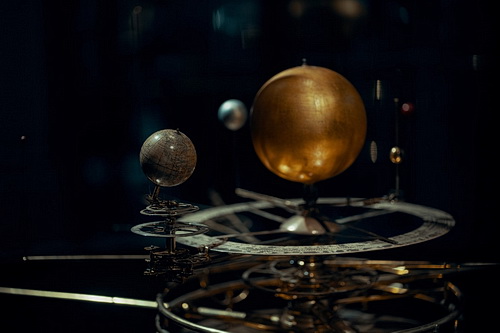
Why is it that you can’t look at the sun for more than 1/2 second? What would happen to you? No doubt you will need a trip to the optometrist or worse, you may go blind!
So, what is it that causes this object that is 93 million miles from Earth so powerful? Simply speaking, the sun is a star, and just like any star, they are extremely large in comparison to planets and carry the equivalent of millions of atomic bombs that ‘explode’ every second.
Learning how planet sizes compare to each other, then how the different stars compare to each other is a worthwhile journey and one that fascinates many. Once you read this article, you may find it inconceivable to try to comprehend the size of our universe. In one word – Mind-boggling.
Comparing Our Planets to Each Other

Planets are a mere spec in our galaxy. In the first illustration below, we compare the eight planets in our solar system. From the left, we have Saturn and Jupiter. Middle, we have Uranus and Neptune. The front row is Mercury, Venus, Mars, and Earth. Note how Jupiter can engulf Earth by about 50 times.
In our next image, we move closer inward and look at the inner solar system. There is an error in the image below. Can you find it?
Pluto does not belong here for two reasons. (1) It is not part of the inner solar system and (2) it is not considered a planet anymore.
Comparing the Sun to the Planets
This image shows the planets compared to our sun. The Earth here is now hardly visible. Even Jupiter is the size of a pea compared to the sun. If the sun was a basketball, then Jupiter would be a pea.
Think the sun is big! Think again. The image below compares the sun to the star giant Arcturus, which is 37.5 light-years from Earth and is larger than the entire orbit of Mercury. Read more about Arcturus here. Another basketball to pea scenario.
Comparing Other Stars to Each Other
If these sizes don’t fascinate you, take a look at the next illustration, showing Arcturus paired with the star giants Betelgeuse and Antares. Forget about trying to see any of our planets here, as the sun is a mere pixel on the screen. That would equate to a grain of sand against a basketball (Antares). See our summary below.
We hope these comparisons give you a better appreciation and respect for the galaxy and the universe.
Summary:
We started with a comparison of Earth to the four inner planets in the solar system. Earth appears the largest. Then Earth and the inner four planets are compared to the outer planets and Earth now appears like a pea to a basketball (Jupiter).
Next, all the planets in our solar system are compared to our Sun, a medium-sized star in the Milky Way galaxy. Continuing to use the pea as our example as Earth and the basketball as Jupiter, the sun would be the size of a 10-story building. Putting a pea and a basketball next to this building, well you can start to appreciate the immense sizes of the objects in space, but we haven’t even scratched the surface yet.
The image below is an estimated comparison between planet Mars’s orbit superimposed on the giant star Antares. Notice how Antares engulfs its orbit with room to spare. Earth would not be visible here, nor would Jupiter.
One could only imagine the immense gravitational pull this star would have on any objects coming close to it. Future black hole?
Well, we don’t stop here. The largest known star is UY Scuti, located in the constellation Scutum, it is 1700 times larger than the Sun.
With stars this big, one can only imagine the great gravitational pull they will have on other objects in their neighborhood, and in so doing, we can begin to understand how black holes can be formed.
View this video of planetary and star comparisons, as well as the video creator’s view of intelligent life in the universe.
There is also a fascinating website called Scale of the Universe which will help you look at the ‘big picture’, pun intended.
March 2015 – R131 in the Large Magellanic Cloud was recently found to be the largest star to date.
